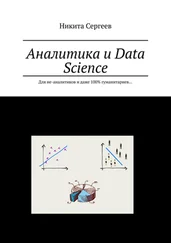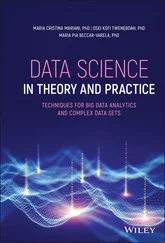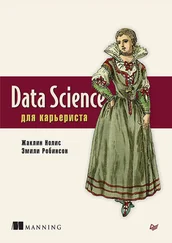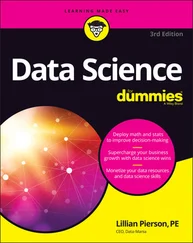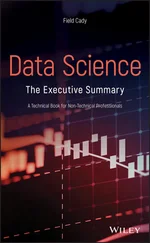1 ...6 7 8 10 11 12 ...16 Not all that long ago, a hospital was not exactly the safest of places to go and get well. In one account from the 1800s, it was noted that “hospitals are the sinks of human life” ( www.archive.org/stream/proceedingsconn08socigoog). Through the use of anesthesia and the adoption of sterilization techniques, along with the advent of X-rays in 1895, hospitals turned a corner from being a highly risky place to get treated. But now, in a throwback to the 18th and 19th centuries, hospitals are once again seen as a less-than-desirable place to receive therapeutic medical treatment, as cited in a CDC report on hospital-acquired infections ( www.documentcloud.org/documents/701516-cdc-hai-infections-deaths.html).
Facilities currently challenging the traditional hospital include walk-in urgent care centers, imaging facilities, surgical centers, physician offices, and so on. Hospitals are being forced to consider mergers and acquisitions as well as downsizing. Hospitals are being disrupted and need to seek nontraditional ways to remain relevant. Could the use of advanced analytics be part of the approach?
Ultimately, if AI is going to augment human intelligence, AI will be part of the means to transform or disrupt. While AI can potentially hypothesize about what can be relevant, AI is likely going to be challenged to convey a de facto direction as what needs to be done to remain relevant. For AI and for humans, collaboration is an augmented opportunity to address a defining issue of our times: relevance.
Therefore, the sole purpose of an information architecture for AI can be postulated, as an aid in the transformation and disruption of an organization that is on a ladder to achieve sustained or regained relevance, whereby each point of leverage is based on data and the organization is willing and capable of harnessing the insights that can be derived from that data.
Without data there's no AI. Period. AI works well because organizations now have the means to economically collect and hoard immense quantities of digital information. Augmenting our work with machines and AI is the norm.
For example, when was the last time you went a day without Googling ? Chances are, you don't give machine learning a second thought when you're interacting with AI-infused capabilities. We are augmenting our work with AI, and in large part, it feels totally natural.
Organizations still have a long way to go to fully realize how they can augment all of their processes with AI. For companies that are successful, the result should feel natural.
Data-Based Reasoning Is Part and Parcel in the Modern Business
Advanced analytics, including AI, can provide a basis for establishing reasoning by using inductive and deductive techniques. Being able to interpret user interactions as a series of signals can allow a system to offer content that is appropriate for the user's context in real time.
To maximize the usefulness of the content, the data should be of an appropriate level of quality, appropriately structured or tagged, and, as appropriate, correlated with information from disparate systems and processes. Ascertaining a user's context is also an analytical task and involves the system trying to understand the relationship between the user and the user's specific work task.
For an industrial-based business application, a user might have a need to uncover parts and tools that are required to complete maintenance on a hydraulic system. By using adaptive pattern-recognition software to help mine a reference manual about hydraulic systems and their repair, a system could derive a list of requisite tools and related parts. An advanced analytic search on hydraulic repair could present content that is dynamically generated and based on product relationships and correlated with any relevant company offerings.
Pulling content and understanding context is not arbitrary or random. Aligning and harmonizing data across an enterprise or ecosystem from various front-end, mid-end, and back-end systems takes planning, and one of the results of that planning is an information architecture.
Advances in computer processing power and the willingness for organizations to scale up their environments has significantly contributed to capabilities such as AI to be seen as both essential and viable. The ability to harness improved horsepower (e.g., faster computer chips) has made autonomous vehicles technologically feasible even with the required volume of real-time data. Speech recognition has become reliable and is able to differentiate between speakers, all without extensive speaker-dependent training sessions.
There is no hiding that AI can be a complex subject. However, much of the complexity associated with AI can be hidden from a user. While AI itself is not a black art, AI benefits when traditional IT activities such as data quality and data governance are retained and mastered. In fact, clean, well-organized, and managed data—whether the data is structured, semistructured, or unstructured—is a basic necessity for being able to use data for input into machine learning algorithms.
There will be many situations when an AI system needs to process or analyze a corpus of data with far less structure than the type of organized data typically found in a financial or transactional system. Fortunately, learning algorithms can be used to extract meaning from ambiguous queries and seek to make sense of unstructured data inputs.
Learning and reasoning go hand in hand, and the number of learning techniques can become quite extensive. The following is a list of some learning techniques that may be leveraged when using machine learning and data science:
Active learning
Deductive inference
Ensemble learning
Inductive learning
Multi-instance learning
Multitask learning
Online learning
Reinforcement learning
Self-supervised learning
Semi-supervised learning
Supervised learning
Transduction
Transfer learning
Unsupervised learning
Some learning types are more complex than others. Supervised learning, for example, is comprised of many different types of algorithms, and transfer learning can be leveraged to accelerate solving other problems. All model learning for data science necessitates that your information architecture can cater to the needs of training models. Additionally, the information architecture must provide you with a means to reason through a series of hypotheses to determine an appropriate model or ensemble for use either standalone or infused into an application.
Models are frequently divided along the lines of supervised (passive learning) and unsupervised (active learning). The division can become less clear with the inclusion of hybrid learning techniques such as semisupervised, self-supervised, and multi-instance learning models. In addition to supervised learning and unsupervised learning, reinforcement learning models represent a third primary learning method that you can explore.
Supervised learning algorithms are referred to as such because the algorithms learn by making predictions that are based on your input training data against an expected target output that was included in your training dataset. Examples of supervised machine learning models include decision trees and vector machines.
Two specific techniques used with supervised learning include classification and regression.
Classification is used for predicting a class label that is computed from attribute values.
Regression is used to predict a numerical label, and the model is trained to predict a label for a new observation.
An unsupervised learning model operates on input data without any specified output or target variables. As such, unsupervised learning does not use a teacher to help correct the model. Two problems often encountered with unsupervised learning include clustering and density estimation. Clustering attempts to find groups in the data, and density estimation helps to summarize the distribution of data.
Читать дальше


![Роман Зыков - Роман с Data Science. Как монетизировать большие данные [litres]](/books/438007/roman-zykov-roman-s-data-science-kak-monetizirova-thumb.webp)
